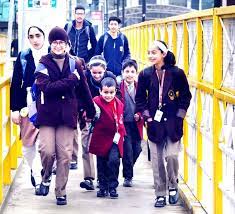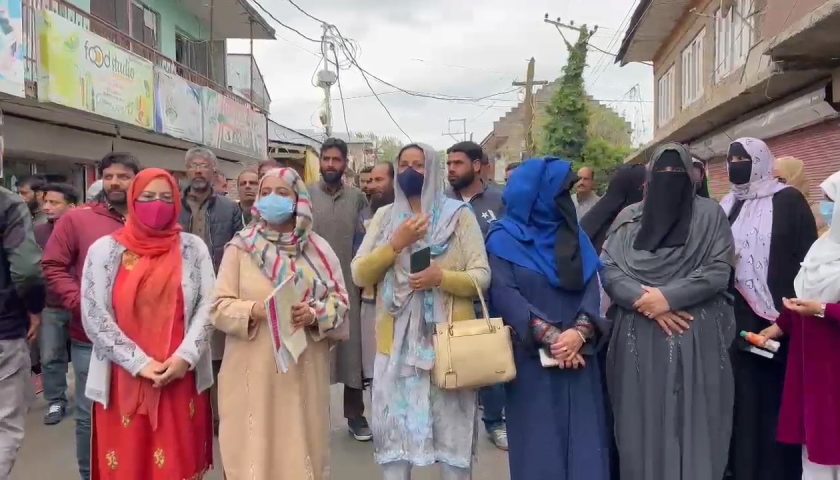Transforming Education in the Valley: Reimagining Kashmir’s Summer Sessions for a Brighter Future
By: Javid Amin
Srinagar: Nestled amidst the majestic peaks of Kashmir lies a unique educational system facing a formidable challenge: the summer session. As schools emerge from a 100-day winter slumber, a curious reality unfolds – the initial month is not dedicated to easing students into the new academic year but rather to navigating a rigorous series of examinations. This departure from conventional routines begs the question: Is the summer session truly conducive to the educational landscape of Kashmir?
A Calculus of Lost Days: The Impact of Winter Disruptions
Beyond the postcard-perfect scenery lies a harsh truth. Kashmir’s winter often extends well into March, rendering the designated “winter break” a fluid concept. Severe weather conditions, coupled with inadequate infrastructure in many schools, lead to closures that extend beyond the official vacation period. Building resilient infrastructure is no easy feat; it demands sustained effort, substantial financial investment, and a long-term vision.
In this equation of time, each lost day carries immense weight. It represents a missed opportunity for learning, a gap in the educational journey that shapes young minds. With the winter months offering a limited window for instruction, a significant portion of the curriculum remains untouched, resulting in a knowledge deficit that students must grapple with upon their return to classrooms amidst the burgeoning warmth of summer.
The Detachment Factor: Addressing Learning Discontinuity
The extended winter break disrupts the delicate rhythm of learning, leaving students feeling disconnected from their studies. What begins as a brief hiatus morphs into a prolonged period of disengagement, significantly impacting their readiness to re-engage with academic material upon their return to school. Consequently, the summer session becomes a frantic race to bridge the knowledge gap created by the prolonged winter pause.
Compounding this issue is the scheduling of examinations in March of the following year. This forces students to revisit a vast amount of material after an extended period of disuse, akin to expecting an athlete to perform at their peak after months of inactivity – an unrealistic expectation that burdens both students and educators alike.
A Call for Reevaluation: Embracing Pragmatism Over Tradition
These challenges underscore the practical difficulties faced by Kashmir’s educational system. The current structure of the summer session, designed for a different climate, imposes a significant burden on students and educators alike. Holding onto tradition for tradition’s sake comes at a cost – compromised learning outcomes for the students who call this valley home.
As the clamor for reevaluation reverberates through the snow-capped peaks, it is imperative to acknowledge the limitations of the existing system. The scarcity of working days during winter, coupled with the academic burden placed on students during exams, necessitates a solution rooted in pragmatism and foresight.
Crafting a Calendar Aligned with Kashmir’s Landscape
The educational journey in Kashmir transcends textbooks and exams; it is a harmonious dance with the ever-changing elements of nature. The harsh realities of winter dictate the need for a curriculum and calendar that are tailored to its constraints.
Reevaluating the session change does not diminish the value of tradition; rather, it invites us to embrace adaptability. It is a recognition that a one-size-fits-all approach to education cannot suffice in a region with such unique seasonal challenges.
Exploring Potential Solutions: Paving the Way for Progress
Reimagining the educational calendar for Kashmir requires a collaborative effort that takes into account the perspectives of various stakeholders. Here are some potential solutions to consider:
- Shifting the Academic Year: Could the academic year be restructured to commence later in spring, allowing for a more balanced distribution of instructional days throughout the year?
- Semester System: Implementing a semester system could offer greater flexibility, enabling educators to adjust curriculum coverage based on weather conditions and unforeseen closures.
- Technology Integration: Embracing online learning platforms and digital resources can supplement traditional classroom instruction, potentially mitigating the disruption caused by winter closures.
- Infrastructure Investment: Prioritizing investment in school infrastructure that can withstand harsh weather conditions is crucial for maximizing instructional time during winter months.
Beyond the Solutions: Cultivating a Culture of Continuous Improvement
Identifying the optimal solution requires ongoing dialogue and data-driven analysis. Regular assessment of the effectiveness of any implemented changes will be essential for ensuring that the educational system adapts and evolves to meet the needs of Kashmiri students.
Ultimately, the goal is to cultivate a learning environment that is not just feasible but truly enriching. It is about nurturing young minds, equipping them with the knowledge and skills they need to thrive, not only in the face of academic challenges but also in the context of the unique realities of their environment.
A New Chapter for Education in the Valley
The narrative of education in Kashmir holds immense promise. By acknowledging the limitations of the current structure of the summer session and embracing the unique rhythm of the valley’s seasons, a transformative approach to education can be fostered.
Here’s how curriculum development can be adapted to create a more harmonious relationship with the natural environment:
- Season-Themed Learning: Winter, with its limited daylight hours, can serve as an opportune time for project-based learning that fosters creativity and independent study. Spring, with its vibrant renewal, offers the perfect backdrop for hands-on learning experiences in nature. Summer, being the longest season, can be dedicated to in-depth exploration of core academic subjects.
- Integration of Local Knowledge: Kashmir boasts a rich cultural heritage and traditional knowledge base. Integrating these elements into the curriculum can create a more engaging and culturally relevant learning experience for students. For example, exploring traditional farming practices during winter months or incorporating local folklore and storytelling traditions during the longer days of summer.
- Focus on Metacognitive Skills: Equipping students with metacognitive skills – the ability to think about their own thinking – empowers them to become self-directed learners. Winter breaks can be utilized to encourage independent reading projects or online learning modules that solidify their understanding of key concepts.
This approach fosters a dynamic learning environment that syncs with the natural cycle of the valley, allowing educators to leverage the unique strengths of each season while mitigating the challenges posed by the harsh winter months.
Embracing Community Voices: A Path Forward Rooted in Collaboration
Reimagining Kashmir’s summer sessions demands more than just top-down directives; it necessitates the active participation of the entire educational community. Here’s how various stakeholders can contribute to a successful transition:
- Educators: Teachers play a pivotal role in shaping the educational experience. Their firsthand insights into the challenges faced by students in the context of the summer session are invaluable. Encouraging their active participation in discussions about potential solutions and piloting new approaches can be transformative.
- Parents and Students: The voices of parents and students are equally crucial. Understanding their concerns and aspirations for the educational system is essential for crafting a solution that truly serves their needs. Open forums and surveys can provide valuable insights to guide the decision-making process.
- Local Administration and Educational Bodies: The role of local administration and educational bodies cannot be overstated. They are responsible for allocating resources, overseeing infrastructure development, and ensuring the smooth implementation of any new educational policies.
- Educational Experts and Researchers: Collaboration with educational experts and researchers can offer valuable insights into best practices for curriculum development and educational calendar design in regions with unique seasonal challenges.
A Beacon of Hope: Investing in the Future
Reforming Kashmir’s educational system is a long-term endeavor that requires sustained investment. Here are some key areas where resources can be directed to create a more resilient and adaptable learning environment:
- Teacher Training: Equipping teachers with the skills and knowledge to navigate the challenges of the summer session is paramount. Professional development programs focused on effective teaching strategies in condensed schedules and innovative methods for engaging students who have experienced a prolonged break can make a significant difference.
- Curriculum Development: Redesigning the curriculum to prioritize essential learning objectives and ensure flexibility for adjustments based on weather conditions is essential. This may involve streamlining content, exploring alternative assessment methods, and incorporating elements of self-directed learning.
- Community Learning Initiatives: Encouraging and supporting community learning initiatives can supplement formal education. These initiatives could include after-school programs, winter camps with educational components, and partnerships with local libraries and museums.
Bottom-Line: Cultivating a Flourishing Educational Ecosystem
The breathtaking beauty of Kashmir serves as a reminder of nature’s enduring power. Just as the valley transforms with the changing seasons, so too can its educational system. By acknowledging the limitations of the current structure of the summer session and embracing a collaborative spirit of innovation, a new chapter can be written.
Imagine classrooms brimming with engaged students, guided by teachers who are equipped to navigate the seasonal shifts. Envision a curriculum that is not only informative but also adaptable, blossoming alongside the vibrant spring flowers. Picture a community that takes collective ownership of its educational future, fostering a love of learning that endures through the harshest winters and flourishes under the summer sun.
This is the vision that can be realized by reimagining Kashmir’s summer sessions. It is a vision where education becomes not just a pathway to academic success but a cornerstone for building a brighter future for the children of this remarkable valley.






